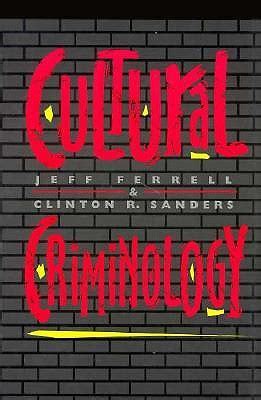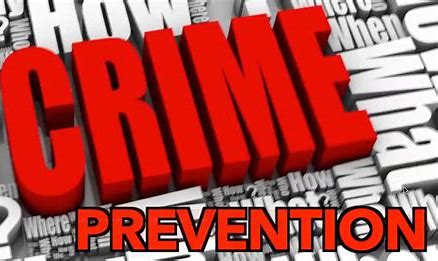Title: Cultural Criminology in the USA: Exploring Subcultures, Symbolism, and Social Control
Abstract:
Cultural criminology offers a unique lens through which to understand the intersection of culture, crime, and society. In the United States, cultural criminology has emerged as a vibrant field of study, exploring the symbolic meanings, rituals, and subcultural dynamics underlying criminal behavior and societal responses to deviance. This essay provides an in-depth analysis of cultural criminology in the USA, examining its theoretical foundations, key concepts, research methodologies, and contributions to understanding crime and social control. By exploring case studies, cultural artifacts, and social movements, this essay illuminates the complex interplay between culture, crime, and power dynamics in American society.
Keywords: Cultural Criminology, Subcultures, Symbolism, Social Control, USA
-
Introduction
Cultural criminology represents a theoretical and methodological
approach that seeks to understand crime and deviance within the
broader context of culture, symbolism, and social relations.
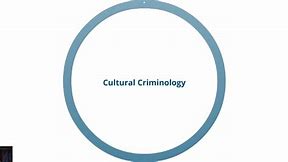
In the United States, cultural criminology has gained prominence as a multidisciplinary field that integrates insights from sociology, anthropology, cultural studies, and criminology to explore the cultural meanings, rituals, and subcultural dynamics associated with criminal behavior. This essay provides an in-depth analysis of cultural criminology in the USA, examining its theoretical underpinnings, key concepts, research methodologies, and contributions to understanding crime and social control in American society.
-
Theoretical Foundations of Cultural Criminology
Cultural Studies:
Cultural criminology draws inspiration from cultural studies, a field that examines the production, circulation, and consumption of cultural artifacts, symbols, and meanings. Cultural studies perspectives emphasize the role of culture in shaping identities, power relations, and social practices, providing insights into the cultural dimensions of crime and deviance.
Interactionism:
Symbolic interactionism, a sociological perspective that focuses on the meanings individuals attribute to symbols, gestures, and interactions, informs cultural criminology’s emphasis on the symbolic nature of crime and social control. Interactionist approaches highlight the importance of subjective interpretations, social meanings, and cultural contexts in understanding criminal behavior.
Postmodernism:
Postmodernist theories challenge traditional notions of truth, objectivity, and authority, emphasizing the multiplicity of meanings, perspectives, and realities in contemporary society. Cultural criminology adopts a postmodern sensibility, embracing diversity, ambiguity, and fluidity in the study of crime, culture, and social identity.
-
Key Concepts in Cultural Criminology
Subcultures:
Cultural criminology examines the formation and dynamics of subcultures—distinctive social groups with shared values, norms, and lifestyles that deviate from mainstream culture. Subcultural theories, such as the work of Albert Cohen, Richard Cloward, and Lloyd Ohlin, provide insights into the role of subcultures in shaping criminal identities, practices, and resistance to social norms.

Representation:
Cultural criminology explores the representation of crime and deviance in popular culture, media, and cultural artifacts, such as literature, film, music, and art. The construction of criminal stereotypes, narratives, and mythologies in popular discourse influences public perceptions, attitudes, and policy responses to crime.
Spectacle:
The concept of spectacle refers to the dramatization, sensationalization, and commodification of crime and violence in media, entertainment, and consumer culture. Cultural criminologists examine the spectacle of crime as a form of symbolic violence that shapes public perceptions, moral panics, and social control mechanisms.
Resistance:
Cultural criminology examines acts of resistance, defiance, and rebellion against dominant norms, institutions, and power structures. Cultural forms of resistance, such as graffiti, street art, and protest music, challenge authority, subvert hegemonic discourses, and assert alternative identities and worldviews.
-
Research Methodologies in Cultural Criminology
Ethnography:
Ethnographic research methods, such as participant observation, interviews, and fieldwork, are central to cultural criminology’s investigation of subcultural practices, rituals, and meanings. Ethnographic studies provide rich, qualitative data that capture the lived experiences and social contexts of criminal actors and subcultural groups.
Visual and Textual Analysis:
Cultural criminologists employ visual and textual analysis techniques to deconstruct representations of crime and deviance in popular culture, media texts, and cultural artifacts. Analyzing images, symbols, and narratives helps uncover underlying meanings, ideologies, and power dynamics embedded in cultural representations of crime.
Discourse Analysis:
Discourse analysis examines the language, symbols, and discursive practices that shape understandings of crime, deviance, and social control. Cultural criminologists analyze discursive formations, media narratives, and political rhetoric to identify dominant ideologies, moral frameworks, and discourses of criminality.
Digital Ethnography:
With the proliferation of digital technologies and online communities, cultural criminologists increasingly employ digital ethnography methods to study virtual subcultures, cybercrime, and digital forms of resistance. Digital ethnography involves studying online interactions, communities, and cultural practices in virtual spaces.
-
Contributions of Cultural Criminology to Understanding Crime and Social Control
Critique of Essentialism:
Cultural criminology challenges essentialist and deterministic explanations of crime, deviance, and social order, highlighting the contingent and contextual nature of cultural meanings, identities, and practices. By deconstructing fixed categories and binaries, cultural criminology offers nuanced understandings of crime as a socially constructed phenomenon.
Reflexivity and Positionality:
Cultural criminology promotes reflexivity and self-awareness in the research process, encouraging scholars to acknowledge their own positionalities, biases, and assumptions. Reflexive approaches help researchers navigate complex ethical, methodological, and epistemological issues in the study of crime and culture.
Emphasis on Agency:
Cultural criminology foregrounds agency, resistance, and creativity in the study of crime and deviance, emphasizing the active role of individuals and groups in shaping cultural meanings, practices, and social change. By highlighting acts of resistance, defiance, and subversion, cultural criminology challenges deterministic and victim-blaming narratives of crime.
Policy Implications:
Cultural criminology offers insights into the cultural dynamics of crime, social control, and criminal justice, informing policy debates and interventions aimed at reducing harm and promoting social justice. By illuminating the cultural contexts of crime and deviance, cultural criminology contributes to more effective, culturally sensitive approaches to crime prevention and intervention.

-
Challenges and Criticisms
Ethical Dilemmas:
Cultural criminology faces ethical challenges related to representation, power dynamics, and researcher reflexivity in the study of sensitive and stigmatized topics. Ethical dilemmas may arise in research with marginalized communities, vulnerable populations, or criminalized subcultures, requiring careful consideration of ethical principles and practices.
-
Media Representations of Crime
Portrayal of Criminals:
Media representations often shape public perceptions of criminals, portraying them as dangerous, deviant, and deserving of punishment. Stereotypical portrayals of criminals reinforce negative stereotypes and stigmatize marginalized communities, contributing to fear, prejudice, and discrimination.
Construction of Crime Narratives:
Media outlets construct crime narratives that frame incidents of crime within broader social, political, and cultural contexts. These narratives may highlight specific types of crime, sensationalize certain cases, or perpetuate moral panics about perceived threats to public safety.
Impact on Public Opinion:
Media representations of crime can influence public attitudes, beliefs, and behaviors towards crime and criminal justice policies. Sensationalized coverage of crime may contribute to public fear, moral outrage, and calls for harsher punishment, shaping public opinion and policy debates.
Alternative Media and Counter-Narratives:
Alternative media sources, including independent journalism, social media, and grassroots movements, offer counter-narratives to mainstream representations of crime. These alternative perspectives challenge dominant narratives, amplify marginalized voices, and provide platforms for critical reflection and dialogue.
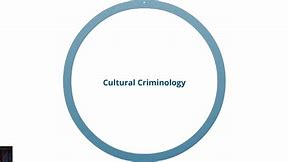
-
Politics of Crime Control
Law and Order Discourse:
Political discourse around crime often emphasizes law and order, promoting tough-on-crime policies, punitive measures, and increased policing and surveillance. Law and order rhetoric appeals to fears of crime and insecurity, mobilizing public support for punitive responses to crime.
Mass Incarceration:
The politics of crime control have contributed to the growth of mass incarceration in the USA, disproportionately impacting marginalized communities, including people of color, low-income individuals, and people with mental health issues. Tough-on-crime policies, mandatory sentencing laws, and the war on drugs have fueled the expansion of the prison-industrial complex.
Resistance and Advocacy:
Grassroots movements, advocacy groups, and community organizations challenge punitive approaches to crime control, advocating for alternatives to incarceration, restorative justice practices, and community-based interventions. These efforts seek to address root causes of crime, promote rehabilitation, and reduce reliance on punitive measures.
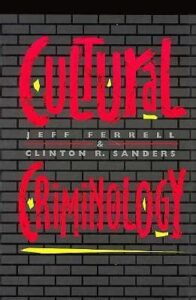
Policing and Surveillance:
The politics of crime control intersect with issues of policing and surveillance, raising concerns about racial profiling, police brutality, and civil liberties. Debates over police reform, accountability, and defunding police departments reflect broader tensions between law enforcement agencies and marginalized communities.
-
Conclusion
Cultural criminology provides valuable insights into the cultural dimensions of crime, deviance, and social control in the USA. By examining subcultural movements, media representations, and the politics of crime control, cultural criminology illuminates the complex interplay of culture, power, and resistance in shaping perceptions, experiences, and responses to crime. Moving forward, cultural criminology has the potential to inform policy, practice, and public discourse on crime and social justice, contributing to more equitable and inclusive approaches to addressing crime and its cultural contexts.
